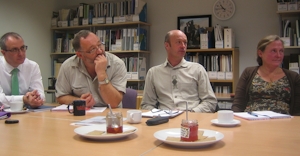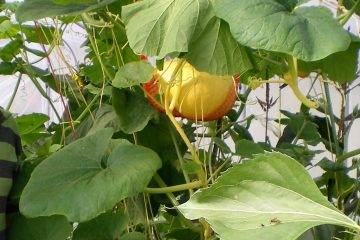On 13 November 2013 11 people met to hear about the StarTree project and to discuss how it could support non-wood forest product (NWFP) development in Scotland. Between them they represented a wide range of interests in forestry and the NWFP sector, with an impressive array of knowledge and experience.
In 2014 our StarTree work may include some practical research exploring regional branding. Reforesting Scotland’s Emma Chapman gave a brief overview of existing initiatives in Scotland. One recent success story is the Handbook of Scotland’s Wild Harvests, a lively guide to living and working with Scotland’s wild resources, with each section based on hands-on experience. The editor, Fi Martynoga, gave an insight into how the book was collectively written, and still is being collectively marketed by members of the Scottish Wild Harvests Association.


 Much discussion followed. There was a strong feeling that more information is needed, if the NWFP sector in Scotland is to be promoted and developed. What is the baseline? We need to know how big the sector is, and how many businesses are in it, if we are to judge whether an intervention has had an effect. What is the commercial value of each useful species? Which have the greatest commercial potential, and what is the value of the different products they yield? What silvicultural regimes would maintain NWFP yields?
Much discussion followed. There was a strong feeling that more information is needed, if the NWFP sector in Scotland is to be promoted and developed. What is the baseline? We need to know how big the sector is, and how many businesses are in it, if we are to judge whether an intervention has had an effect. What is the commercial value of each useful species? Which have the greatest commercial potential, and what is the value of the different products they yield? What silvicultural regimes would maintain NWFP yields?
Hopefully the current StarTree surveying work will answer some of these questions!
The group stressed the need to get NWFPs into the commercial mainstream and to find viable business opportunities which would motivate landowners to value woodland more, but also the importance, sometimes, of keeping it local, of looking at individual woods and community benefit, of growing organically and focusing on local markets.
Getting information out to the people who can use it is vital, too. Most people in Scotland have never heard of “NWFP”s, and don’t recognise them as a sector. Too often “productive forestry” means only Sitka spruce plantations. Perhaps what is needed is indeed not so much a brand as a broader promotion – of a sector that is not generally recognised in Scotland . It would also be good to produce a directory, listing as many Scottish NWFP businesses as possible.
One very strong shared interest was firewood. A shortage of skills, of access to land and of suitable equipment makes this an underutilised woodland resource in Scotland. The discussion focused on local use and simple log-burning stoves: the direct use of logs for low-carbon heating is surprisingly overlooked. The group were disappointed that StarTree is not designed to include firewood.
This was a tremendously useful day, with generous input of knowledge and ideas from some very experienced people. Some have offered to contribute to the ongoing data collection, and when the results are drawn together next year they group will be asked to help create a report on the current state of NWFPs in Scotland, to give a solid basis for future work, during the StarTree project and hopefully beyond.
Woodland products
The day was helped along by a few tastes of the forest:
Sparkling birch juice from Latvia, by Dabas Dobe.
Woodland herb tea blend (elderflower, nettle, black currant leaf and spearmint) from Rowancott Herbs
Homemade rowan and apple and rosehip jellies by Fi Martynoga.
 The presentations from the meeting are available here:
The presentations from the meeting are available here:
Stakeholder engagement and the Regional Stakeholder Group
Data collection – do you know the answers?



